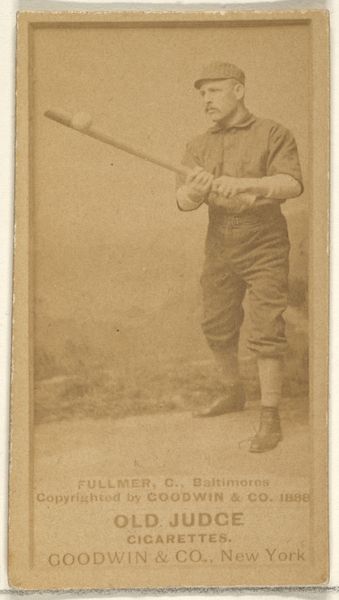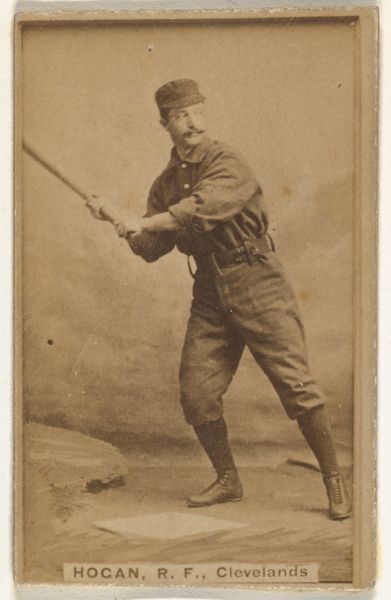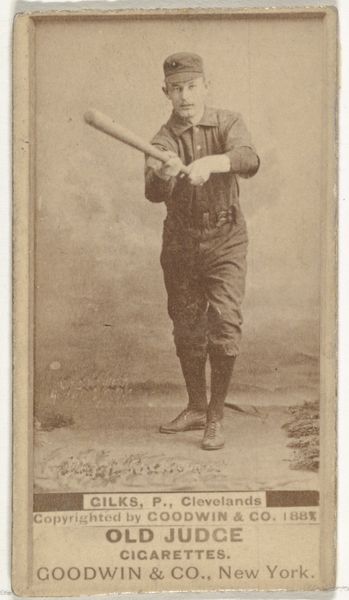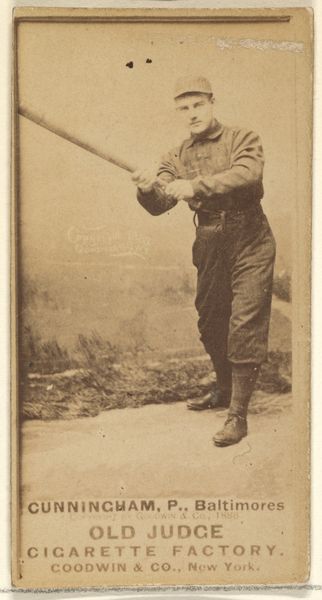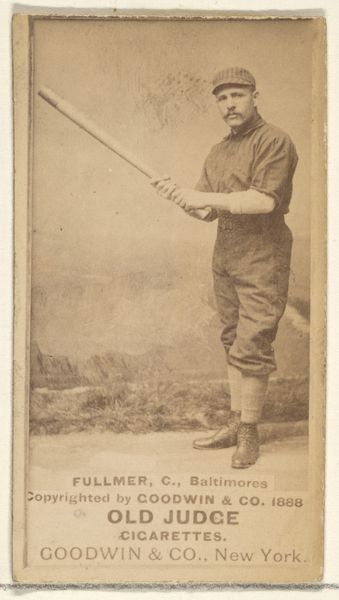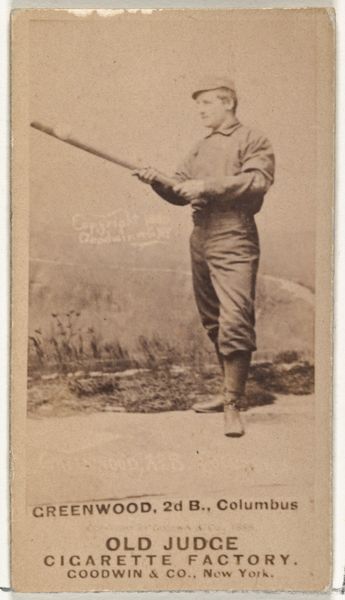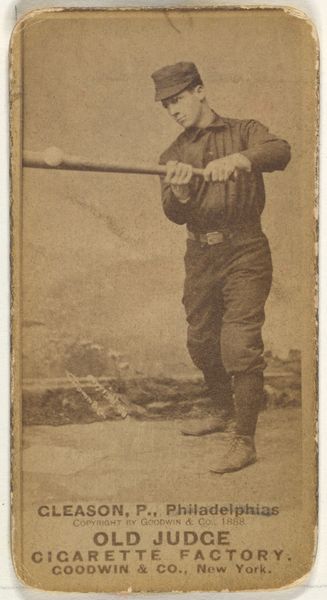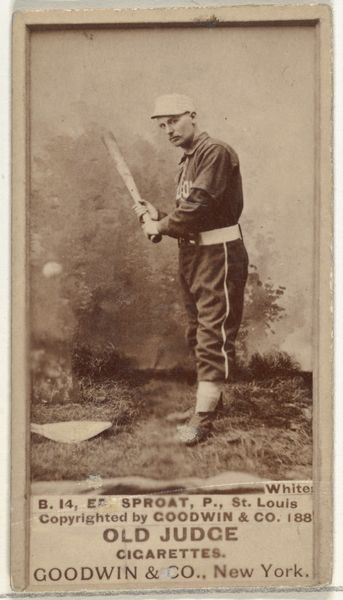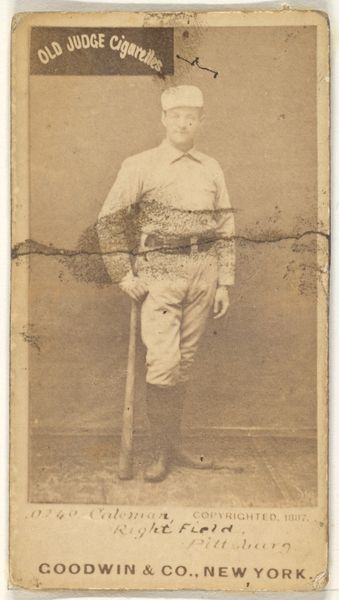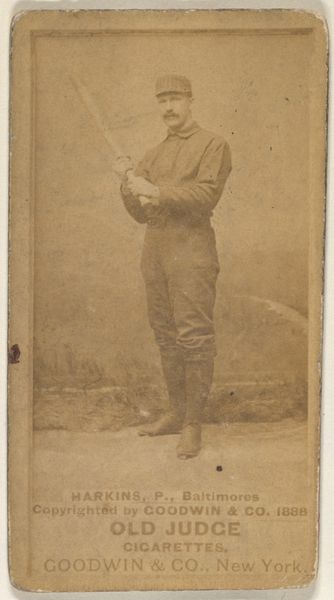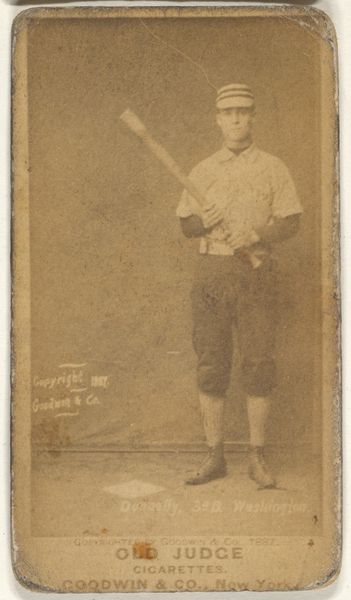
O'Brien, Catcher, Baltimore Orioles, from the Old Judge series (N172) for Old Judge Cigarettes 1888
0:00
0:00
drawing, print, photography
#
portrait
#
drawing
# print
#
baseball
#
photography
#
men
#
athlete
#
realism
Dimensions: sheet: 2 11/16 x 1 3/8 in. (6.9 x 3.5 cm)
Copyright: Public Domain
Curator: Here we have "O'Brien, Catcher, Baltimore Orioles, from the Old Judge series," a baseball card dating to 1888 by Goodwin & Company. The photographic print feels very much of its time. Editor: Immediately, I’m struck by the weight of this image. He seems stoic, planted—a figure of stability amidst a sea of transient cultural images. The sepia tones add to the gravity. Curator: Exactly. And the fact that it's an advertisement for Old Judge Cigarettes complicates the narrative. The image of O’Brien becomes entangled with early marketing strategies and the commercialization of athletics. What does it mean to associate a star athlete's image with a product that, from a contemporary perspective, carries significant health risks and socio-economic baggage? Editor: Beyond its context as a piece of marketing ephemera, consider the iconic imagery at play. Baseball, deeply woven into the fabric of American identity, represents concepts of competition, teamwork, and tradition. His bat, although still, embodies a silent power, promising future action and triumphs to come. Even his pose speaks volumes, promising confidence and quiet resolve, so typical of idealized male personas of that era. Curator: Right, and his ethnic presentation is crucial too. He appears, from our vantage point, like the quintessential Irish American man. We might discuss this photograph in terms of both inclusion and exploitation: how racial and ethnic groups, aspiring towards acceptance, negotiate power dynamics to attain status, particularly within institutions like Major League Baseball, that, even today, struggle with race. Editor: And the cap, the carefully groomed mustache, all these signifiers speak to an emerging idea of respectability. His gaze, despite being staged, holds the gaze, compelling us to recall a long-ago sporting moment. Perhaps these photographic tokens helped baseball connect on a deeply emotional level with fans across class lines, especially first and second generation immigrants. Curator: In a way, this piece is deceptively complex. Seemingly a simple baseball card, it unpacks questions surrounding celebrity, consumerism, ethnic representation, and American mythology. Editor: Absolutely. There's more than nostalgia at play in that cardboard rectangle—a condensed story about dreams and commerce, about bodies, sports, and self-making in Gilded Age America.
Comments
No comments
Be the first to comment and join the conversation on the ultimate creative platform.
